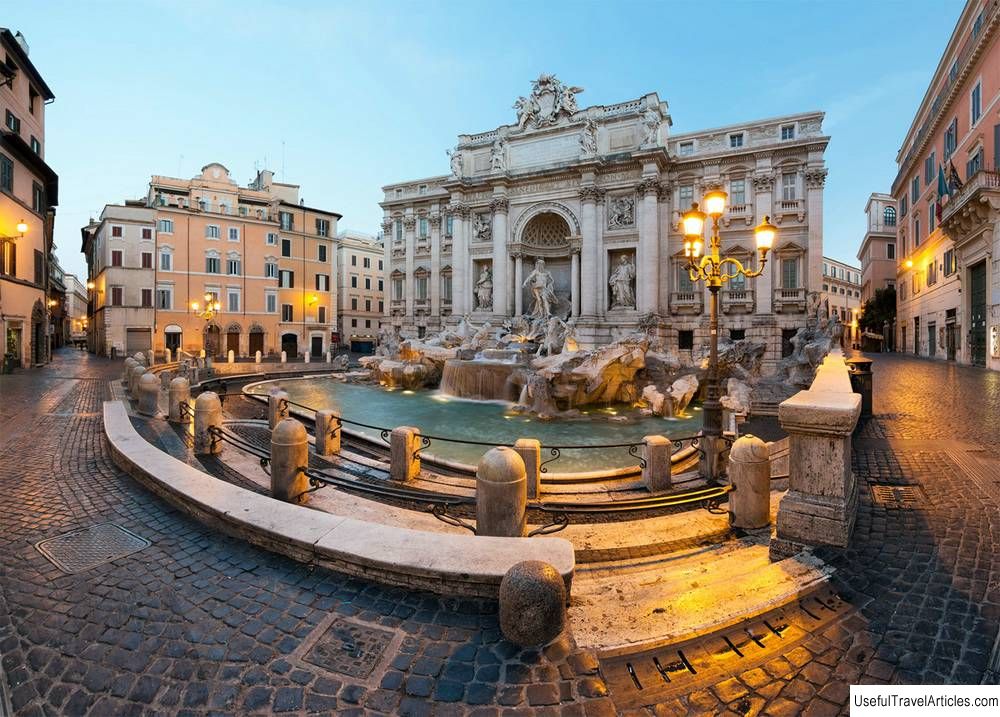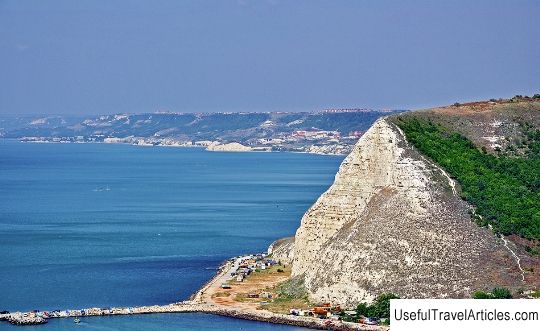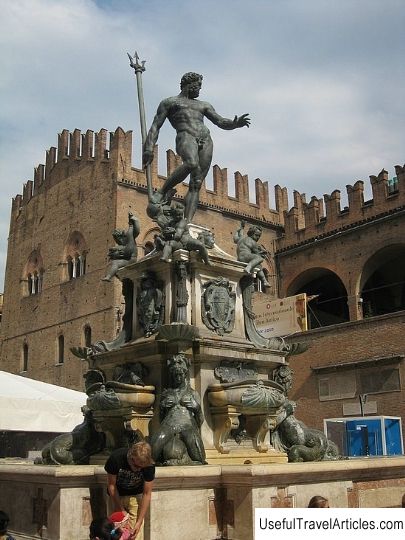Fontana di Trevi description and photos - Italy: Rome
Rating: 8,4/10 (2049 votes) 
Trevi Fountain (Fontana di Trevi) description and photos - Italy: Rome. Detailed information about the attraction. Description, photographs and a map showing the nearest significant objects. The title in English is Fontana di Trevi. Photo and descriptionThe most famous Roman fountain, the Trevi Fountain, was built according to drawings by Giovanni Bernini and a project by Nicolo Salvi in 1762. On a small square, the Trevi Fountain looks huge: 26 meters high and 20 meters wide. The background for the source is the 16th century Baroque Palazzo Poli, which now houses the Institute of Graphics and Design. History of the Trevi FountainLegend has it that the name of the fountain comes from the name of the girl Trivia, who pointed the thirsty Roman soldiers to a spring of clean water. In fact, "trevi" is a derivative of "tre via" - three streets, at the intersection of which is the famous fountain. On the Place de Trevi there was a source of water from which the townspeople took water, and when in 1732, with the blessing of Pope Clement XII, it was decided to build a fountain in the city, the place was predetermined. Water is supplied to the fountain from external sources and is supplied through an aqueduct built in the 1st century BC. From the middle of the 15th century, a small fountain-bowl was installed on the square - the work of the architect Alberti. Pope Urban VIII in 1629 invited the artist Giovanni Bernini to present a new project, but the construction of the fountain stopped with the death of the Pope. The construction of the composition continued in 1732 by Nicolo Salvi, who decided not to change the foundations of Bernini's project. The complex is being rebuilt and Palazzo Poli, because its appearance does not harmonize with the idea of the fountain. The then unknown Luigi Vanvitelli is in charge of the palace. Nicolo Salvi died in 1752 without completing the construction, and Bartolomeo Pinzellotti worked on the composition for another 10 years, Giovanni Grossi, Pietro Bracci and other architects. Finally, in 1762, Pope Clement XIII inaugurated the Trevi Fountain. Composition of the fountainThe general theme of the sculptural group is the myths about the sea and its inhabitants. The base is a large rounded pool, surrounded by a curb and stairs on both sides to make the difference in height of the area invisible. When you are in the square, you get the feeling of a theatrical scene from the life of the sea god. Neptune-Ocean, standing, rules a chariot in the form of a shell, drawn by seahorses and tritons. The statue of the lord of the deep sea is in front of the high arch of the palazzo, and the illusion is created that the chariot is leaving it. To the right and to the left of the central group are sculptures - symbols of Health and Abundance, and above them - the figure of a girl pointing the soldiers to the source of water. New mythsFor many years the Trevi Fountain has been a must-see for tourists. It is considered a good omen to throw coins into the water with your back to Neptune. If you want to get married quickly, throw three coins. Looking for mutual love for life? For just three coins, the fountain is ready to help you. If you want to come to Rome again - one coin to the fountain - and your wish will come true. For lovers who want to never part, there are special "lovers' tubes" on the side, from which you need to drink water together. Thanks to such signs, the municipal services of Rome catch up to 11 thousand euros from the fountain every week. The money is transferred to the international charitable foundation "Caritas". In the 90s, the fountain was reconstructed and for some time it was not allowed to throw coins into the water, but soon the ban was lifted. If possible, visit the Trevi Fountain in the evening when the lights are on. An unforgettable majestic sight awaits you. Tips
          We also recommend reading Monument to the sister cities of Murmansk description and photos - Russia - North-West: Murmansk Topic: Fontana di Trevi description and photos - Italy: Rome. |




